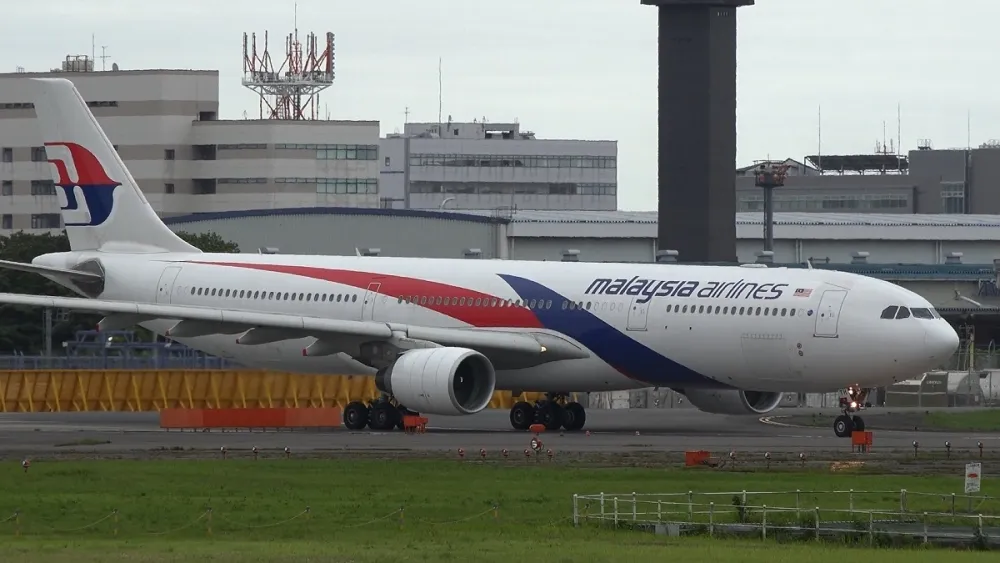
Malaysia Airlines to use space-based tech to track aircraft
Apr 19, 2017

Malaysia Airlines is set to enhance its aircraft tracking capabilities by leveraging space-based technology. This initiative aims to improve the safety and efficiency of its operations by utilizing satellite systems to monitor flight paths in real-time, even over remote areas where traditional tracking methods are limited. By investing in advanced tracking solutions, the airline seeks to bolster its operational reliability and provide peace of mind to passengers and stakeholders. This move reflects a broader trend in the aviation industry towards adopting innovative technologies to ensure better oversight and management of aircraft in the skies.
Introduction to Space-Based Technology in Aviation
In a groundbreaking move, Malaysia Airlines is set to implement space-based technology for tracking its aircraft. This innovative approach aims to enhance safety, improve operational efficiency, and provide real-time data to both the airline and its passengers. With the aviation industry continually evolving, the integration of satellite technology is a significant step forward in ensuring the safety of air travel.
Benefits of Space-Based Tracking Technology
The use of space-based tracking technology offers numerous advantages for airlines, particularly Malaysia Airlines. Some of the key benefits include:
- Real-Time Tracking: Space-based technology allows for real-time monitoring of aircraft positions, offering precise data on their location.
- Enhanced Safety: This technology improves safety measures by enabling quicker responses to emergencies and potential incidents.
- Operational Efficiency: Airlines can optimize flight paths, reduce fuel consumption, and minimize delays by utilizing accurate tracking data.
- Global Coverage: Unlike traditional radar systems that have limitations, satellite technology provides coverage in remote areas where conventional tracking methods may fail.
How It Works
Space-based tracking involves the use of satellites equipped with advanced tracking systems that communicate with aircraft. The process can be summarized as follows:
- Aircraft are equipped with satellite communication systems that transmit their location data.
- Satellites in orbit receive the signals and relay the information to ground stations.
- Ground control personnel and airline operations centers monitor the data in real time.
This seamless flow of information ensures that Malaysia Airlines can maintain constant communication with its fleet, enhancing operational oversight.
Implementation Timeline
Malaysia Airlines has outlined a phased approach to implementing space-based tracking technology. The following table illustrates the key milestones in the deployment process:
| Phase | Timeline | Objectives |
|---|---|---|
| Phase 1 | Q1 2024 | Initial testing of satellite systems with select aircraft. |
| Phase 2 | Q3 2024 | Full-scale implementation across the fleet. |
| Phase 3 | Q1 2025 | Integration with existing operational systems and training for personnel. |
Challenges and Considerations
While the transition to space-based tracking technology presents exciting opportunities, there are also challenges that Malaysia Airlines must address:
- Cost of Implementation: The investment in new technology can be significant, requiring careful financial planning.
- Training Requirements: Staff must be trained to adapt to the new systems and protocols that come with space-based tracking.
- Regulatory Compliance: Ensuring adherence to aviation regulations and standards is essential for successful implementation.
The Future of Tracking Technology in Aviation
The adoption of space-based tracking technology is not just a trend; it is a glimpse into the future of aviation. As Malaysia Airlines takes this bold step, other airlines may follow suit, recognizing the value of enhanced safety and operational efficiency. The integration of advanced technologies will likely become a standard practice in the industry, revolutionizing how airlines operate.
Conclusion
Malaysia Airlines' decision to utilize space-based technology for aircraft tracking marks a significant advancement in the aviation sector. This initiative promises to elevate safety standards, improve operational efficiency, and ultimately enhance the flying experience for passengers. As the airline progresses through its implementation phases, the industry will be keenly observing the outcomes and benefits of this innovative approach. The future of aviation tracking is bright, and Malaysia Airlines is at the forefront of this transformative journey.
Key Takeaways
- Malaysia Airlines is adopting space-based technology for aircraft tracking.
- This technology offers real-time tracking and enhanced safety.
- The airline will roll out the implementation in phases, with full-scale integration expected by Q3 2024.
- Challenges include costs, training, and regulatory compliance.
Related Articles

Explore Thailand: The Best Islands to Visit for Paradise, Adventure, and Relaxation

The Ultimate Guide to the Best Islands in Thailand for Your Next Getaway

Do babies need passports? How to get a passport for a newborn

How to get a U.S. passport fast: here’s how to expedite the process

What is Mobile Passport Control: 5 reasons why you should use it

SENTRI vs. Global Entry: A detailed guide

Do you need a passport to go to the Bahamas? Let’s find out

Do you need a passport to go to Mexico? A detailed guide

Do you need a passport to go to Canada? We got the answer

Do You Need a Passport for a Cruise: An Essential Travel Guide

Booster Seat Requirements: All the Rules to Follow in Your Rental Car

What Are the World’s Most Powerful Passports, and How Does Yours Rank?

How to Take a Passport Photo at Home: A Helpful Guide

You've got to have heart! Southwest's new livery

Your opinion: Should water be free on low cost carriers?

Young women bolder than guys as solo travellers
